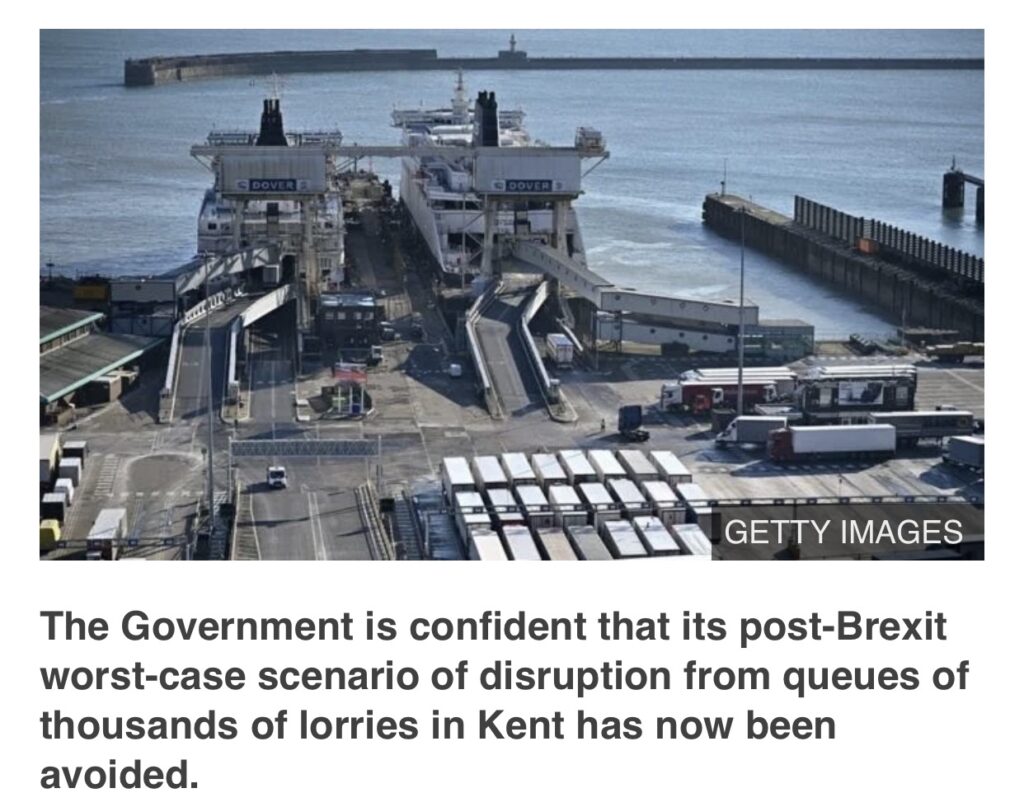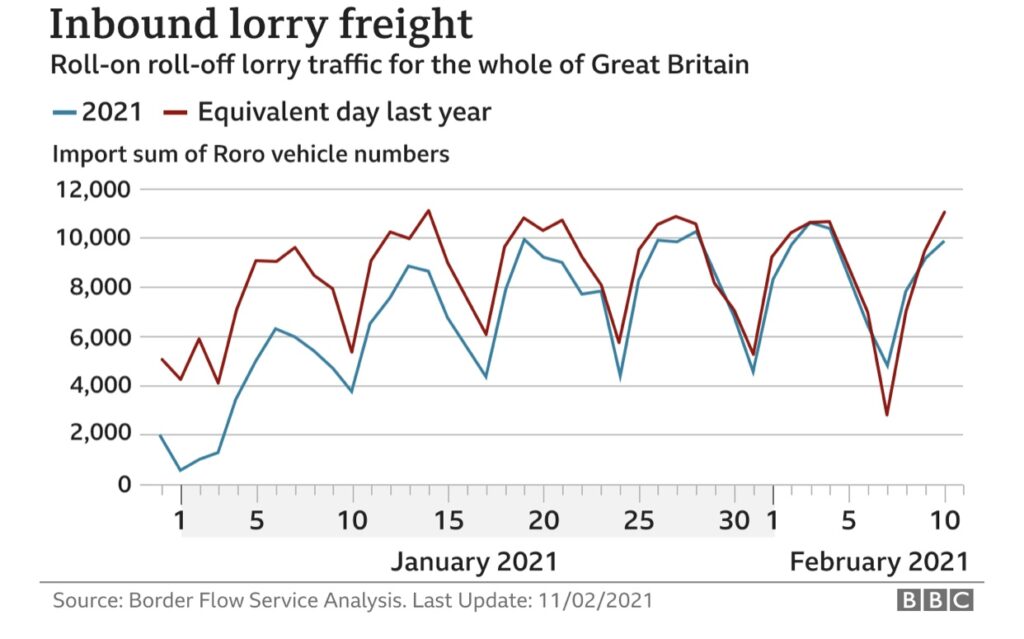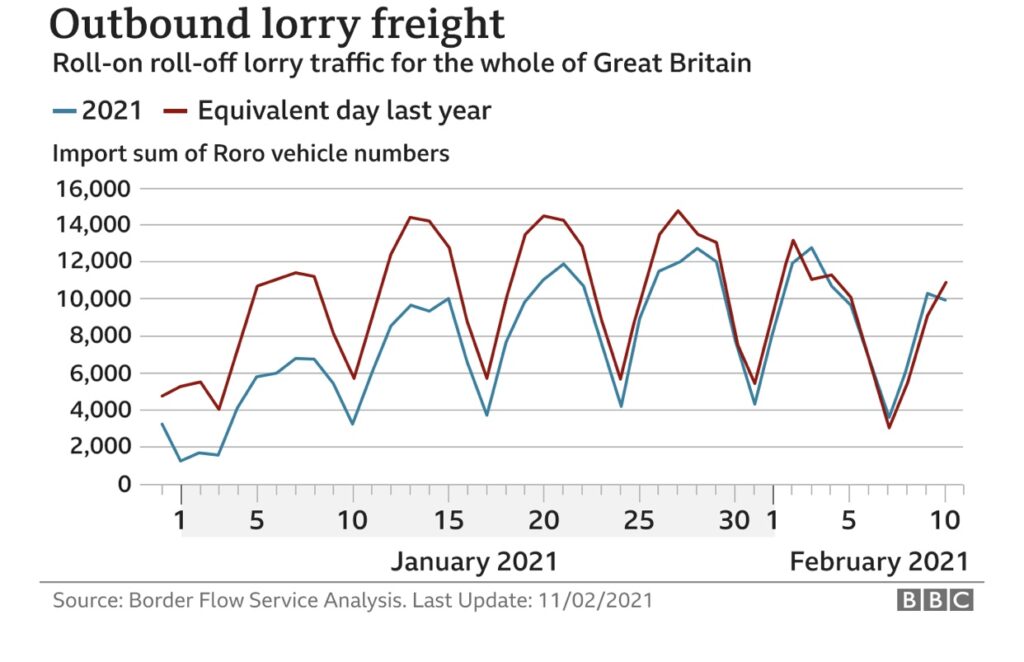Brexit lorry chaos avoided as freight flows ‘back to normal’
Overall freight flows have returned to the same levels as last year.

Internal figures seen by the BBC show outbound roll-on roll-off lorry traffic for Great Britain for the month so far at 98% of last February’s levels.
Inbound traffic is at 99% of last year’s levels.
The transition period after the UK left the EU is now over, and a new regime is in place.
One official says the government is “pleased that overall flows are back to normal”.
About 80-90% of laden lorries are arriving border-ready.
Larger manufacturing firms in particular appear to have taken advantage of new systems designed to prepare loads for the border on leaving premises.
Officials say they are pleased that overall flows are back to normal.

However, their analysis of data from multiple sources – ferry manifests, port traffic, the Channel Tunnel, French officials and Kent Permit checks – also shows:
- significantly lower traffic in January
- a notable rise in the number of empty lorries returning from Great Britain to the European Union, and
- specific industries clearly affected by the end of the Brexit transition period
Lorry traffic on the crossing from Kent to the EU on ferries and via the Channel Tunnel in January was 67% of the same month in 2020, and 82% in February.
Although there is no formal count of empty lorries, a variety of ferry company, French, and UK official data suggest the proportion of empty lorries going back to the EU at around 50%.
French sources suggested Eurotunnel, which tends to transfer higher-value loads, was seeing 50-60% empty loads.
Industry sources said the existence of such empty lorries was not new, but that this was normally at 25-30%.

So far this year, there is also evidence of freight routes changing and more traffic going via Harwich and Immingham to the Netherlands, though this will also reflect the recent French Covid testing policy.
The Government’s data on lorries turning back due to the wrong documentation is now below 2.5%, having been closer to 8% in the first days of the new regime.
Combining the reduction in traffic flow with the increased number of empty lorries, it is possible to calculate that actual lorry transfers of freight in January from Kent to the EU were substantially down, by around 2,000 lorries a day compared to January 2020.
Even now, with overall levels back to normal, there are around 1,000-2,000 fewer lorries exiting the whole of Great Britain with actual freight.
This is partly down to pre-Christmas stockpiling, but that effect is likely to be waning now.
The government has also internally identified what type of exports are in the lorries, as that information is reported in ferry manifest data.
From this, it has concluded internally that exports of clothing and apparel have been hit mainly by a Covid lockdown impact.
But the fall in food, agriculture and sea fish exports is the impact of the post-Brexit transition period.
The big picture is that the worst-case scenario queues have not materialised. But the economic impact in specific areas of the economy is noticeable in the same data.
French officials confirmed this same general picture, and both sides of the Channel reported a good level of cooperation in ironing out problems with, for example, IT systems.
Official statistics on this will only start to be available with trade figures for July published next month.
Internally, the Government’s hope is that the lack of congestion can now tempt cautious traders back into fully using these trade routes.
Source: BBC
You must be logged in to post a comment.